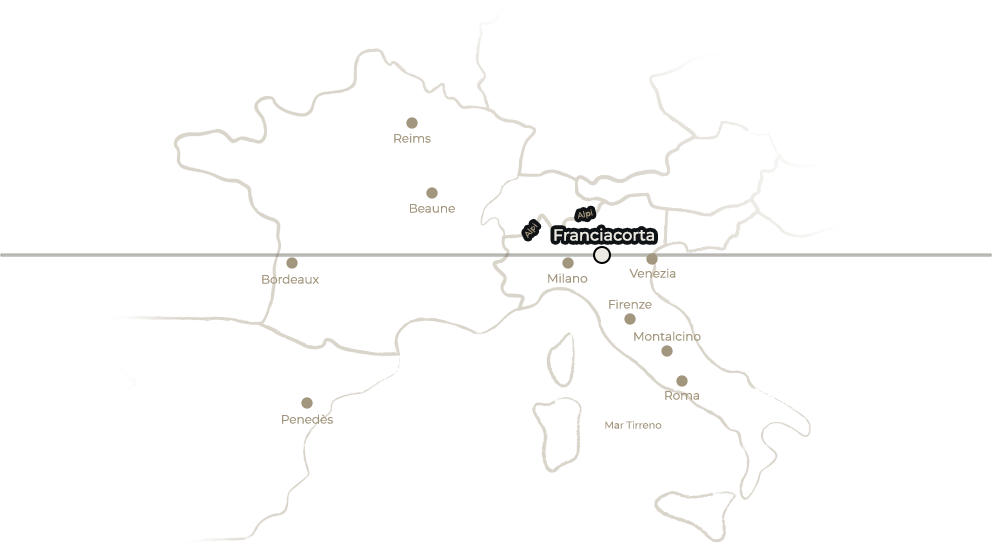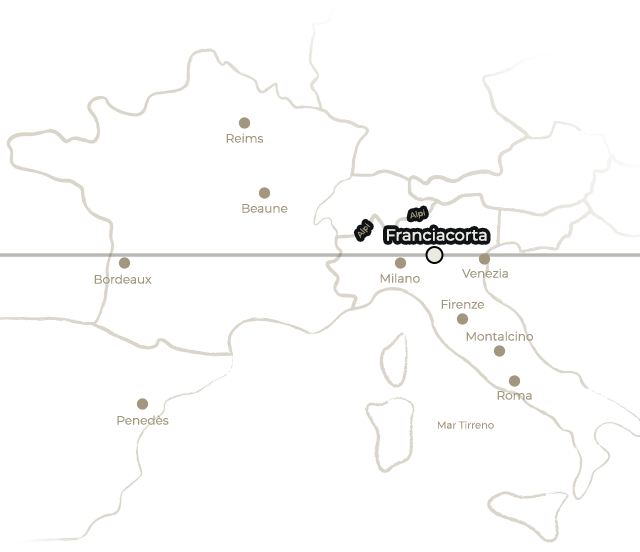Vineyards 360°
Ca' del Bosco's heritage is represented by its land: more than 450 hectares cared for directly by the company, of which approximately 281 hectares are vineyards that have been cultivated for several years according to the dictates of organic farming, and since 2011 in a certified manner.
In addition to this, there are approximately 112 hectares of woodland distributed close to the vineyards, 54 hectares of meadows, pastures, arable land and wooded strips, and finally 4.5 hectares of olive groves that have been producing a small amount of oil for some time. So many different realities that together contribute to creating a complex ecosystem capable of hosting multiple forms of life of which Ca' del Bosco wants to be the guardian.
In 2020 - in collaboration with Alessandro Masnaghetti - the idea was born of mapping the Ca' del Bosco vineyards through images that would allow them to be set in the context of the Franciacorta landscape, dwelling on its lesser known and more fascinating nuances. Observing a landscape, reading it and interpreting it, is in fact the most effective and intuitive way to understand a wine-growing area and to get in tune with its wines.
Not films, therefore, but 360-degree panoramic shots capable of involving the user, transforming him or her from a simple spectator to an active user able to explore the images in full autonomy, pausing, if he or she deems it appropriate, also on the in-depth texts and agronomic notes.


